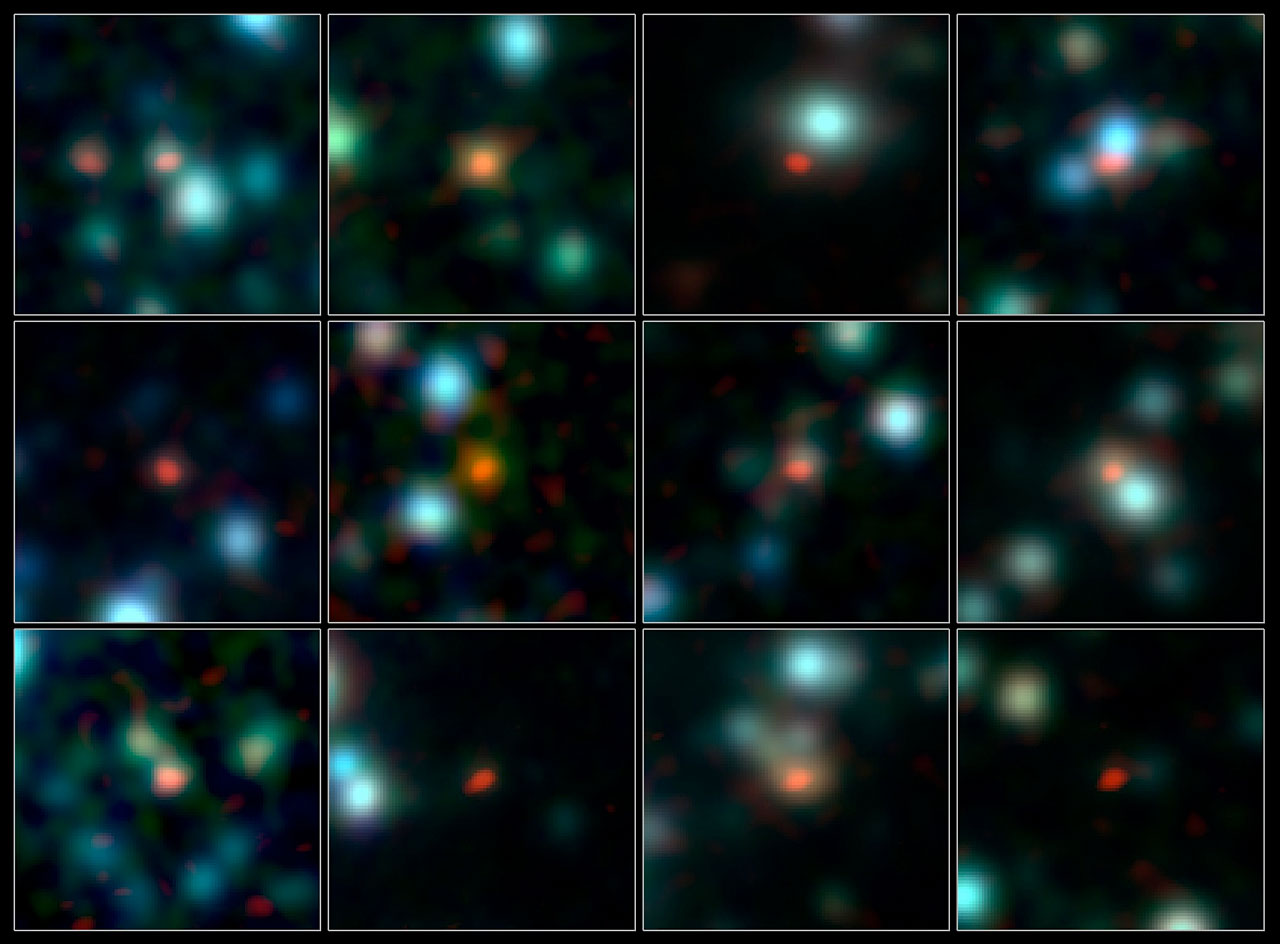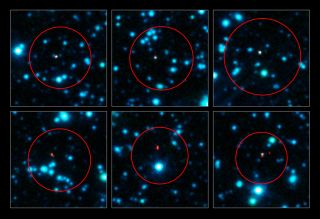Huge New Radio Telescope Pinpoints Ancient Star-Forming Galaxies (Photo)

A stunning new image from a giant telescope in Chile shows more than 100 ancient, star-forming galaxies in greater clarity than ever before.
The picture, released today by the European Southern Observatory, represents some of the first observations done by the Atacama Large Millimeter/submillimeter Array (ALMA) — a group of high-powered telescopes arranged on a high plateau in the Chilean desert.
Scientists using ALMA turned their attention to a patch of sky in the southern constellation of Fornax, "The Furnace," and gathered data in order to sharpen the resolution of images captured by another ESO telescope, APEX (short for the Atacama Pathfinder Experiment). [See Photos of ALMA]
"Astronomers have waited for data like this for over a decade," Jacqueline Hodge of the Max-Planck Institute in Germany, a scientist involved in the new research, said in a statement. "ALMA is so powerful that it has revolutionized the way that we can observe these galaxies, even though the telescope was not fully completed at the time of the observations."
APEX had set its sights on the full-moon-size patch of sky to conduct a sweeping search for fertile (or star-forming) regions of far-off galaxies. Although the survey created the "best map so far," it still wasn't as clear as scientists were hoping, ESO officials said.

APEX found 126 galaxies, but astronomers weren't able to pinpoint exactly where the galaxies lie. The star-forming regions of the galaxies blurred the rest of the image, obscuring the locations of the galaxies themselves.
That's where the ALMA radio telescope came in. By pointing ALMA at each suspected galaxy for two minutes apiece, the telescope was able to find every star-forming galaxy within a region 200 times smaller than that of the APEX photos.
Get the Space.com Newsletter
Breaking space news, the latest updates on rocket launches, skywatching events and more!
"We previously thought the brightest of these galaxies were forming stars a thousand times more vigorously than our own galaxy, the Milky Way, putting them at risk of blowing themselves apart," Alexander Karim of Durham University in the United Kingdon, who was also associated with the research, said in a statement. "The ALMA images revealed multiple, smaller galaxies forming stars at somewhat more reasonable rates."
ALMA can see farther and deeper in certain wavelengths of light than any other radio telescope in history. The $1.3 billion observatory took 10 years to construct and has 57 dishes working right now. By summer, ALMA is expected to be fully operational with 66 telescopes online.
Follow Miriam Kramer on Twitter and Google+. Follow us on Twitter, Facebookand Google+. Original article on SPACE.com.
Join our Space Forums to keep talking space on the latest missions, night sky and more! And if you have a news tip, correction or comment, let us know at: community@space.com.

Miriam Kramer joined Space.com as a Staff Writer in December 2012. Since then, she has floated in weightlessness on a zero-gravity flight, felt the pull of 4-Gs in a trainer aircraft and watched rockets soar into space from Florida and Virginia. She also served as Space.com's lead space entertainment reporter, and enjoys all aspects of space news, astronomy and commercial spaceflight. Miriam has also presented space stories during live interviews with Fox News and other TV and radio outlets. She originally hails from Knoxville, Tennessee where she and her family would take trips to dark spots on the outskirts of town to watch meteor showers every year. She loves to travel and one day hopes to see the northern lights in person. Miriam is currently a space reporter with Axios, writing the Axios Space newsletter. You can follow Miriam on Twitter.